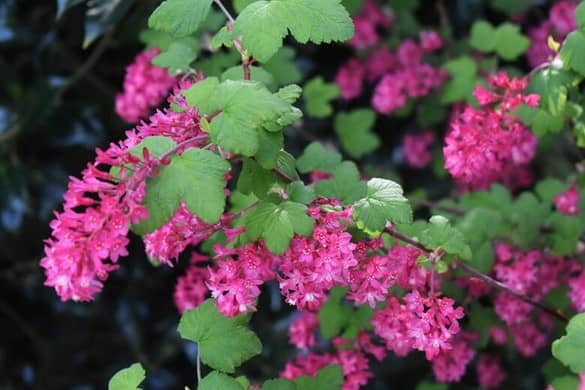
Gardens | Nature needs us
YOU AND I MIGHT NOT have met in person, but our gardens connect us. And I don’t just mean our shared love for spring tulips and seasonal planting rhythms. (By the way: It’s time to get those peas in the ground.)
As an organic vegetable gardener, I’ve always honored the connection between pollinators and food, but it wasn’t until I installed a mason bee shelter in my back garden that my interest blossomed into a year-round fascination with nature’s tiny army of beneficial insects. The more I read about tending a wildlife-friendly garden, the more I learn how nature relies on connection.
Here in the city, parking lots, pavement, bare rooftops and expansive landscapes devoid of flowers (think: turf) disrupt and fragment natural habitat. Thankfully, nature doesn’t recognize property lines. Even a solitary window box, a traffic circle or a weedy crack in the sidewalk helps support our planet’s wild mix.
It’s all a part of nature, as are we. A butterfly exists where it is free to flourish — where there are plants to feed the caterpillar, and shelter to keep it from getting picked off by predators. Lacking habitat, the butterflies vanish. Urban yards, parks and green spaces go a long way toward providing pathways through our neighborhoods, allowing wildlife to leapfrog from one landscape to another.
To turn your garden into a thriving hotspot for biodiversity, plan and plant for year-round bloom, and aim to keep overlapping waves of flowering plants coming on throughout the year to provide a steady supply of nectar and pollen for pollinators. You don’t have to completely forsake your favorite ornamentals; just make sure to liven up the mix with wildlife-friendly plantings, like Oregon grape, flowering currant and yarrow, native plants that have co-evolved with our region’s native pollinators.
It’s easy to focus on blossoms and berries, but we can’t stop there. A fully functional habitat for pollinators, songbirds and wildlife includes furnishing water, shelter and space for these creatures to raise their young. Remember, if you want more butterflies, it’s time to think about caterpillars.
Later in the year, when things get dry, provide a shallow water source. This can be as simple as a glazed saucer filled with water and a few rocks that allow bees and butterflies a perch to sip from without drowning. And don’t be too zealous with mulch. Many ground-nesting beneficial insects require a patch of bare soil to lay their eggs.
The world’s largest nonprofit devoted solely to protecting the health of pollinators, Pollinator Partnership (P2) works with partners across the country and around the globe to raise awareness about how human health and pollinators are interconnected.
On the P2 website (pollinator.org), you’ll find loads of resources, including regionally specific guidelines for creating diverse and effective pollinator gardens in all growing seasons. They’ve even come up with a catchy reminder about how the way we tend our spaces matters on a scale that far exceeds our garden’s own footprint: S.H.A.R.E. stands for Simply Have Areas Reserved for the Environment. Register your pollinator habitat on the P2 website to see how our gardens connect.
Lorene Edwards Forkner is the author of “The Beginner’s Guide to Growing Great Vegetables,” Timber Press, 2021. Follow along at ahandmadegarden.com.
